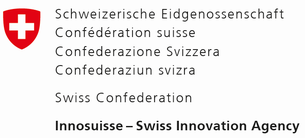
In an interview with Swisspreneur, Dorian Selz, founder of local.ch and Squirro, talks about why you should consider going international and why the best strategy when doing so is to localize. Dorian reminds us that regardless of your coordinates, one thing remains constant, you always need to differentiate yourself from the rest! Read on to gain first hand insights about the pros and cons of internationalization, the timing of doing so and the effective collaboration necessary within your business and its partners.
We’ve divided the topic into the following:
- Advantages of Going International
- When to Pack Your Bags
- Collaborative Efforts
For more applicable advice, listen to the full podcast with Dorian here.
Advantages of Going International
One of the most relevant arguments to go international is the growing global entrepreneurial environment which prioritizes competitive edge and innovation. This environment is constantly developing because many large companies are under pressure to innovate faster than their size, setup and culture allows for. Consequently, and this is where you come in, many of them have started to rely on the innovative potential of startups to move ahead.
While working with a larger, slower and also more powerful company can come with its share of risks, many early startups have been able to capitalize on these companies’ strong networks to help get into the international market. This is especially the case in the United States where the ecosystem tends to gravitate towards early adoption in contrast to the Swiss market which can be more often limited in size, by language fragmentation and by a lack of truly big and high risk VC’s.
Read this to learn more about how collaboration is valuable in growth and the challenges your company will encounter while pushing for expansion.
When to Pack Your Bags
Wondering when the timing is right to internationalize? Even though most teams have a plan and timeline for taking their business abroad, the reality is that internationalization rarely adheres to the plan. This is because your customers, the decision drivers in your company, will often take you down a path different from the one you might have expected. For example, if you planned to go to the UK but found bigger fish in Spain, you should follow your customer and trust in a move to go to Spain instead. As always in entrepreneurship, being adaptable and being confident in your product, the market and your knowledge of your customers, is essential.
Once you have an anchor customer of size and some commitments from potential partners for example, then it’s all about localizing! You might think you know how the world is run but no one knows it better than the people living in the area where you plan on doing business. Localizing means capitalizing on these insights and, building and staffing your business there accordingly. It also means adapting your product to local circumstances such as languages, laws and regulations.
Because a contract with a company overseas can be your ticket to internationalization, it’s valuable to start engaging early on in informal contact with B2B analysts (most notably Gartner and Forrester) because most companies rely on their due diligence for partner scouting. It always helps if you have good references so even though buying those subscriptions can be an expensive game, it’s worth it in the long term.
Other attention seeking measures:
● Global implementation partners to help spread the word such as Simplus, Adnovum, Salesforce.
● Marketing campaigns
● Taking part in conferences and speaking engagements in the destination country
A local and agile task force should include:
● field marketing
● pre sales
● sales
● delivery
● post sales
At home:
● core engineering
Consider this: Early on in your internationalization process it’s a good idea to take the lead in both sales and delivery. This is true even if you have a local partner because you’ll want to make sure everything is being delivered at the highest calibre and accuracy to your brand as your first few wins will determine your reputation quite heavily.
Collaborative Efforts
While your home team and the localized task forces you have abroad are separated by distance and borders, it’s important to continue to portray a consistent product and brand. It all comes down to communication, task allocation and distribution. Ensure a healthy international organization by facilitating agile management.
It’s highly recommended to get everyone together for a two-day offsite nutcracker every half year. There, on the first day of your collaborative efforts, you can look back on the last half of a year, sleep on it, and the next day look forward and map out strategies for the future. Everyone leaves your reunion on the same page and all the great feedback and collaboration gets dispersed to bi-weekly sprints which then trickle down to daily individual tasks. Then, in half a year you can get together to collaborate all over again.
Focused Funds:
So you’re a money losing operation. You want to go international but you’re not selling enough to finance your expansion. Don’t fret, you might still be on the right track! Consider that inherently, innovation cannot turn profits at the beginning stages. Stay positive and remember that some of the best innovations turn up red numbers for years before they start to see profit. Do your best to:
● Re-invest every dime into expansion
● Fundraise according to the stage you’re in
● Focus on product market fit
● Take advantage of distribution partnerships to stand on the shoulder of giants. (If you can’t beat them, join them!)
● Coordinate data partnerships
● Engage with implementation partners
Remember, partners tend to have more followers than leaders. That means it’s up to you to bring sales leads to them, train them, get them aligned with your vision and use your own resources to remove the risk of failure of the implementations you’re engaged with. Then, only after you’ve invested your efforts, you have a competitive advantage and can successfully scale to a level which you couldn’t have done alone.
More on setting your sales team up for success here.
Final Message
Seize the opportunity and just DO IT! It’s easier than ever before to engage internationally and it opens up your perspective on business, innovation and life outside of the Swisspreneur bubble.























































Please login or sign up to comment.
Commenting guidelines